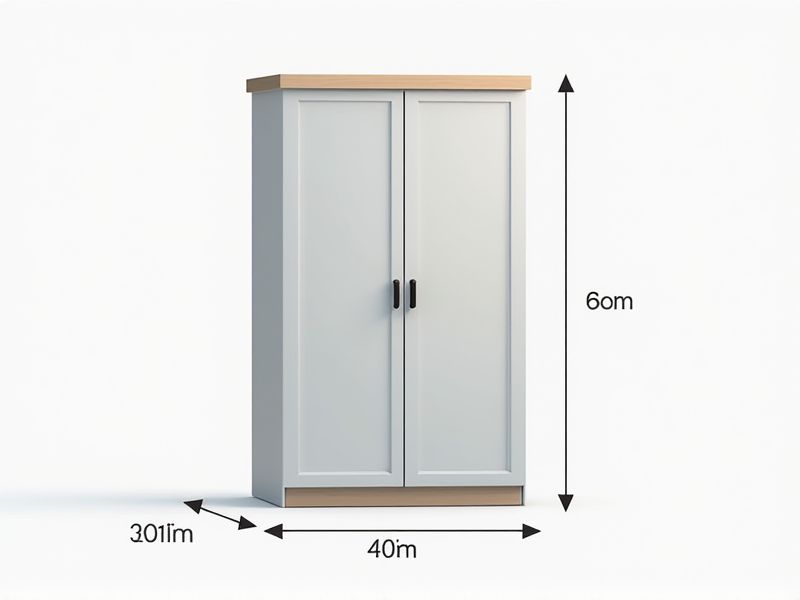
When considering renting a storage unit, it's helpful to know the standard dimensions typically available. Popular sizes include 5x5 feet (25 square feet) for small items or boxes, 5x10 feet (50 square feet) for a small apartment's contents, and 10x10 feet (100 square feet) for the contents of a one-bedroom apartment. Larger options, such as 10x15 or 10x20 feet, are suitable for storing items from multi-room homes or vehicles. By knowing these standard sizes, you can better estimate which unit will meet your storage needs without overpaying for extra space.
Cubic Footage Capacity
Storage units typically range in cubic footage from 25 to over 400 cubic feet, accommodating various needs. A 5x5 unit, for instance, offers approximately 125 cubic feet of space, ideal for small furniture or boxes. Larger units, such as a 10x20, provide around 1,600 cubic feet, suitable for larger items like vehicles or equipment. Understanding the cubic footage helps you determine the right unit size for your belongings, ensuring efficient and organized storage.
Height Constraints
Height constraints for storage units typically range from 7 to 10 feet, depending on the facility's specifications. These dimensions are crucial for maximizing vertical space while ensuring easy accessibility for users. In facilities with multi-level storage, units can accommodate a wide variety of items, from personal belongings to business inventory. Knowing these constraints helps you optimize your storage solution effectively.
Width Parameters
Storage units typically range in width from 5 to 10 feet, catering to various needs such as personal items, business inventory, or vehicle storage. A standard 10x10 storage unit provides approximately 100 square feet of space, accommodating the contents of a one-bedroom apartment. For larger requirements, a 10x20 unit offers 200 square feet, ideal for storing the belongings of a three-bedroom house, including furniture and appliances. Understanding the width and dimensions of storage units enables you to choose the right fit for your possessions efficiently.
Depth Measurements
Storage units are typically evaluated based on their depth measurements, which can significantly impact the usability of the space. For instance, a standard storage unit may range from 5 to 10 feet in depth, allowing you to optimize your storage solutions based on the type of items you need to store. Consider that deeper units can accommodate larger or bulkier items, while shallower units may be ideal for smaller boxes or frequently accessed belongings. Understanding these dimensions helps you make informed decisions that enhance your organization and accessibility.
Door Size Specifications
Storage units often feature various door size specifications to accommodate diverse needs, with common dimensions including standard sizes of 5 feet, 7 feet, and 10 feet in width. The height typically ranges from 7 feet to 8 feet, allowing for the efficient storage of larger items. Ensuring easy access, a minimum doorway clearance of 6 feet is recommended for larger units. When selecting a storage solution, consider how these door specifications impact your ability to move in and out of your unit with ease.
Weight Limitations
Each storage unit typically has specific weight limitations, which can vary significantly based on size and construction. For example, a standard 10x10 unit may generally accommodate up to 1,200 pounds, while a larger 10x20 unit can handle around 2,000 pounds. Excess weight not only risks damage to your belongings but can also compromise the integrity of the unit itself. You should always check the weight restrictions set by your storage facility to ensure safe and effective storage.
Load-Bearing Capacity
Load-bearing capacity is a critical metric for evaluating storage units, ensuring they can securely hold varying weights without compromising structural integrity. Most high-quality storage units typically support between 1,500 to 3,000 pounds, providing ample strength for many residential and commercial needs. When selecting a unit, it's essential to consider the type of materials used, such as reinforced steel or heavy-duty plywood, which significantly impact the longevity and performance. You should also verify manufacturer specifications to guarantee that the unit meets your specific weight requirements.
Climate Control Considerations
Climate-controlled storage units maintain a consistent temperature range between 55degF and 85degF, protecting your belongings from extreme heat, cold, and humidity. These units typically feature advanced insulation, dehumidifiers, and heating systems to manage both temperature and moisture levels effectively. The controlled environment is crucial for preserving sensitive items such as electronics, artwork, antiques, and documents, which can suffer irreversible damage due to fluctuating conditions. Investing in a climate-controlled unit can prevent costly degradation, ensuring your valuable possessions remain in optimal condition over time.
Security Feature Standards
Modern storage units prioritize robust security features to safeguard your belongings. High-quality facilities often employ surveillance cameras, access control systems, and alarm systems, ensuring 24/7 monitoring. For example, a unit might include electronic gate access with personal codes, providing exclusivity and reducing unauthorized entry risks. With an increasing demand for secure storage, many reputable providers have implemented these advanced security measures to enhance customer trust and protection.
Accessibility Requirements
Storage units must comply with accessibility standards, ensuring ease of access for individuals with disabilities. These facilities should feature wide doorways measuring at least 32 inches and wheelchair ramps with a maximum slope of 1:12. Furthermore, storage facilities are required to provide clear signage with large, contrasting text to assist visually impaired individuals. Implementing these requirements not only adheres to regulations, but also enhances customer satisfaction and inclusivity.
